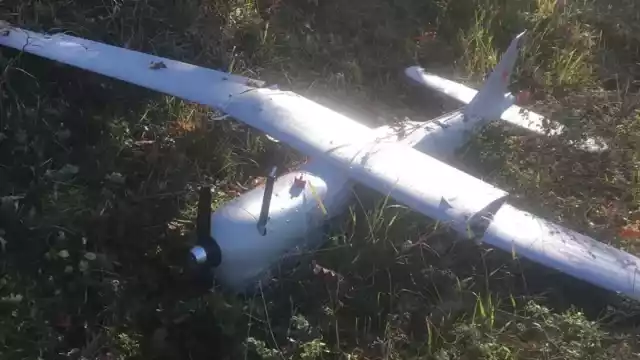| About this column
|
| Window on Eurasia covers current events in Russia and the nations of the former Soviet Union, with a focus on issues of ethnicity and religion. The issues covered are often not those written about on the front pages of newspapers. Instead, the articles in the Windows series focus on those issues that either have not been much discussed or provide an approach to stories that have been. Frequent topics include civil rights, radicalism, Russian Islam, the Russian Orthodox Church, and events in the North Caucasus, among others.
Author Paul Goble is a longtime specialist on ethnic and religious questions in Eurasia. Most recently, he was director of research and publications at the Azerbaijan Diplomatic Academy. He has served in various capacities in the U.S. State Department, the Central Intelligence Agency and the International Broadcasting Bureau as well as at the Voice of America and Radio Free Europe/Radio Liberty and at the Carnegie Endowment for International Peace. He writes frequently on ethnic and religious issues and has edited five volumes on ethnicity and religion in the former Soviet space. |
VIENNA &mdash The Yaghnobs, the last survivors of the pre-Turkic Sogdian civilization in Central Asia and the last nation to be forcibly deported by the Soviet government, are now rapidly dying out after some of them have moved back to their traditional villages in highland Tajikistan, a Moscow journal reports.
Ogonyek says in its current issue that the 70 families are "practically all that remains from the once great and powerful people which lived high in the mountains in the north of Tajikistan," and that because of poverty and harsh conditions, a significant number of them may not survive until spring.
This small group, the journal continues, "live now as they did millennia ago," planting small fields and herding stock, doing without any money because "no one pays them" and because "there is nothing to buy," with the nearest store being more than a day's hike from their villages, which are located above 3500 meters.
The Yaghnobs today have neither schools nor air links to the outside world. "The majority of their children are illiterate, and not all of them are likely to survive until spring." Fourteen Yaghnobs have died from respiratory illnesses during the current severe winter, something that Ogonyek observes is "an enormous loss for a small people."
The Moscow magazine provides only the briefest background to its account. "In the 1970s," it notes, the Soviet authorities "forcibly resettled" the Yaghnobs in the valleys and put them to work in the cotton fields.
But some Yaghnobs, unhappy with that life, have returned home "to the mountains" and restored "approximately 10 kishlaks [small villages] out of the 33" they had before.
In reality, the Yaghnobs, while now much reduced in numbers, have a long and proud history of living their own lives and resisting efforts by outsiders to impose their will on them. When the Bolsheviks established their power in Central Asia in the 1920s, the Yaghnobs were able to remain outside their orbit largely because their homes were in such inaccessible places.
But in 1970-71, Moscow "forcibly deported the entire population of the Yaghnob valley to the cotton plantations in the area of Zafarbod on the northwest border between the Tajik and Uzbek SSRs," an action students of the region say was motivated by both politics and economics.
By bringing several thousand Yaghnobs into the cotton fields, the Soviet authorities believed that they would gain greater control over them and over the territory from which they had been deported often by helicopter and at gunpoint. And the powers that be saw the Yaghnobs as a useful source of labor in the cotton fields.
"Between 400 and 700 Yaghnobis died during their first year in Zafarabod," an American investigator reported. And some of them fled "the harsh desert climate," "inadequate housing, lack of sanitary drinking water, and exposure to tuberculosis" to their mountain homeland, "only to be deported again."
In 1990, the Tajik government approved the re-establishment of the Yaghnob villages, and since that time, Dushanbe has promoted the Sogdian heritage the Yaghnobs represent "as part of a new national identity." According to the Yaghnob site, there are only 300 Yaghnobs left in the mountains, but there are also 6,500 in Zafarabod where they maintain their language.
A Message from The Moscow Times:
Dear readers,
We are facing unprecedented challenges. Russia's Prosecutor General's Office has designated The Moscow Times as an "undesirable" organization, criminalizing our work and putting our staff at risk of prosecution. This follows our earlier unjust labeling as a "foreign agent."
These actions are direct attempts to silence independent journalism in Russia. The authorities claim our work "discredits the decisions of the Russian leadership." We see things differently: we strive to provide accurate, unbiased reporting on Russia.
We, the journalists of The Moscow Times, refuse to be silenced. But to continue our work, we need your help.
Your support, no matter how small, makes a world of difference. If you can, please support us monthly starting from just $2. It's quick to set up, and every contribution makes a significant impact.
By supporting The Moscow Times, you're defending open, independent journalism in the face of repression. Thank you for standing with us.
Remind me later.






